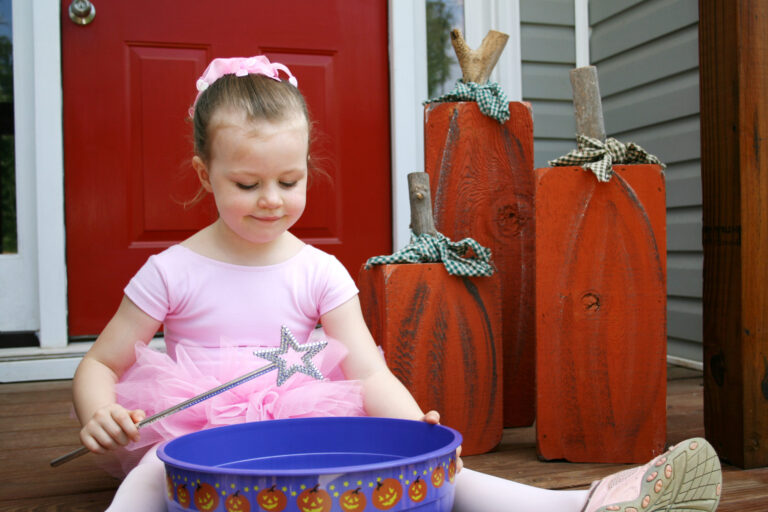
Dance should be a release. But as rates of depression and anxiety rise among teens, and as students feel the pressure to take on ever more commitments, time at the dance studio can turn into yet another stressor. Even if dance isn’t the cause of duress, dancers as a population can be obsessive and perfectionistic, qualities that build meticulous technicians but may also make them more prone to common mental health struggles than the general population.
It’s a topic dancers can be hesitant to confront, and one that requires significant awareness-building and education—which doesn’t happen overnight. “It takes time away from the dancing,” says Brian Goonan, a sports psychologist who works with dancers in Houston. “Most athletes feel, ‘If I don’t spend my time with the physical self or learning the craft, then it’s not valuable.'” But if a dancer doesn’t develop mechanisms to cope with stressors and maintain a healthy sense of self, she puts herself at risk for anxiety disorders and depression, which can drain her energy and love for dance, cause her to struggle in school and personal relationships and, in the worst case, threaten her life.
Misty Lown remembers what it’s like to struggle mentally and emotionally during adolescence. Her parents divorced and faced financial difficulties when she was in high school, at which point she started making destructive decisions like skipping school, and she developed an eating disorder. “I felt pretty invisible,” she says. She credits a librarian at her school for taking interest in her as a person and making her feel like she mattered. “It only takes one caring adult to change the life of a child,” she says.
Because of her personal experience, Lown, who now owns Misty’s Dance Unlimited in Onalaska, Wisconsin, puts dancers’ mental well-being first. “You realize you can shorten their path to discovering their worth,” she says. Teachers, who see kids for hours a week—sometimes more than their parents do—can’t afford to ignore the growing mental health problem. They may be the first (and best) line of defense to help students in need and nurture happy, healthy dancers.

Misty’s Dance Unlimited students participating in a master class. Photo by Megan McCluskey, courtesy of MTJGD.
Helping students balance their schedules
Until recently, many of Lown’s most committed dancers attended classes or rehearsals six days a week. Rehearsals for competition, ballet company and performance troupe dances were tucked in around other classes in 30-minute increments. It was an attempt at efficiency that wasn’t working. For guidance, Lown talked to her clients. In surveys and discussions with parents, she heard over and over that students were struggling to get enough sleep and to keep up with demands of their dance training and other after-school activities. When considering restructuring, she polled parents on ways to improve the program. She decided to upend and remake her studio’s schedule of 200 weekly classes to make everyone less stressed-out.
This means she gave up some revenue. Monday nights used to be a popular night for young children’s classes, with 150 to 200 students attending classes. But it was the night the parents of older dancers preferred for rehearsals, so Lown took the financial hit and moved rehearsals to a single three-hour block on Mondays. Everyone’s much happier, she says.
She also moved older dancers’ classes to later in the afternoon, so they can attend after-school activities beforehand. Lown reasons that this group of students is concerned about improving their resumés before graduation, so she accommodates their other commitments. “Colleges want to see those after-school activities,” she says.
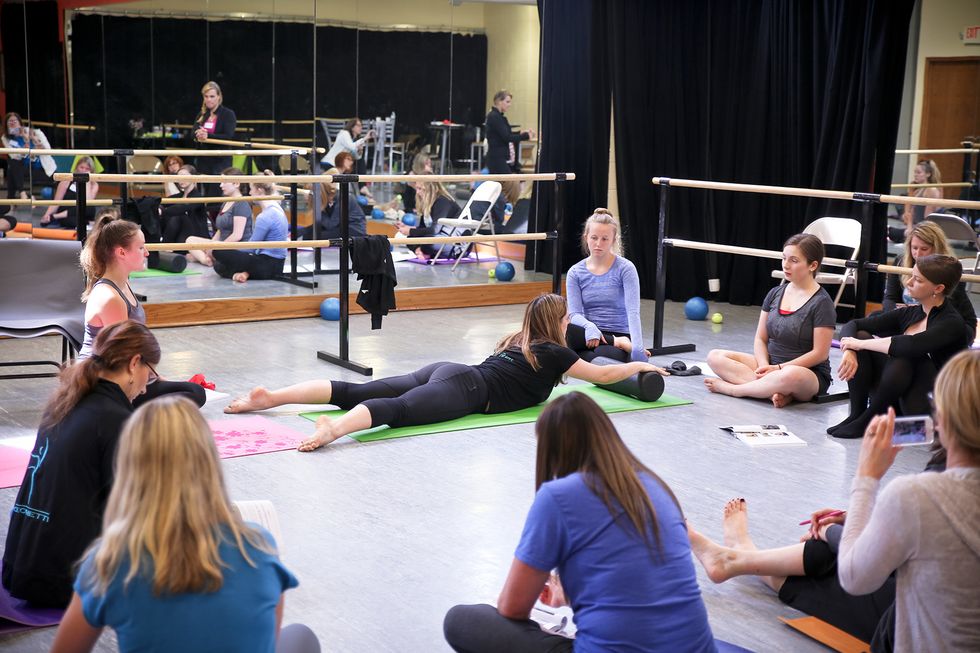
A workshop with physiotherapist Lisa Howell (on mat). Photo by Megan McCluskey, courtesy of MTJGD.
Creating a Zen environment
Lown’s Monday-night rehearsals now include a study space, an eating area for dancers staying through their regular dinner hour, and—miraculously—not a cell phone in sight. That’s right: For three hours, there is no social-media–posting, no photo-sharing or newsfeed-reading. No phones allowed.
Connections between social media and mental health is a hugely popular area of research, with many experts suggesting spending so much of their days online can make young people depressed. The rise in depression and anxiety among teens correlates indisputably with the swell in popularity of smartphones. Excessive phone time may also make it harder to get a good night’s sleep. Lown is already seeing positive results of going phone-free in students’ dancing. “To get them dialed back in after being in digital land is hard,” she says. Students were checking their phones between every rehearsal section. “Now they’re more focused, doing more productive work in the classroom.”
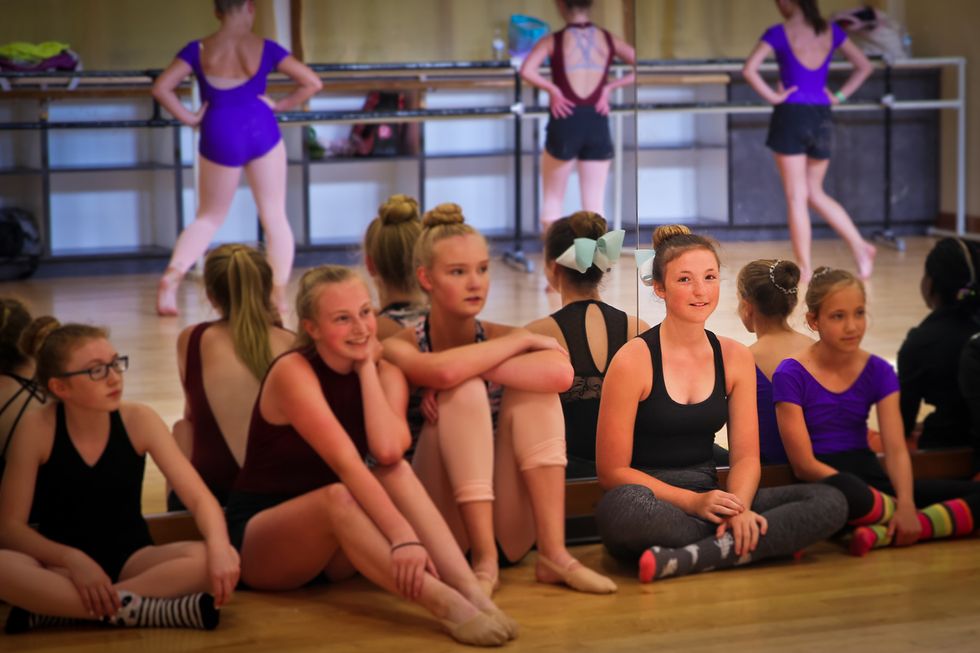
Photo by Megan MCluskey, courtesy of MTJGD
Making mental maintenance part of routine conditioning
Lown has a network of consultants she hires regularly to host talks and workshops for students and parents. Along with a nutritionist and a physical therapist, she invites a family practice doctor to talk about students’ whole-life balance and tuning in to stress cues. A popular guest was the sports psychologist for the Minnesota Vikings, who talked about how mental health relates to performance.
She also offers yearly “dance pathways” conferences in the spring, where she meets with a dancer and their parents to talk specifically about the student’s schedule and strategies for balancing that dancer’s various commitments, including those outside of dance. “I don’t address their development as a dancer,” Lown says. “If they want to know how their pirouettes are progressing, they speak with their teacher.”
Goonan says administrators show how much they care about students’ mental health by how much time they make for it. If you bring in conditioning specialists and nutritionists, he reasons, you should bring in psychologists, too. “Class for mental health is not just how to eat a meal,” he says.
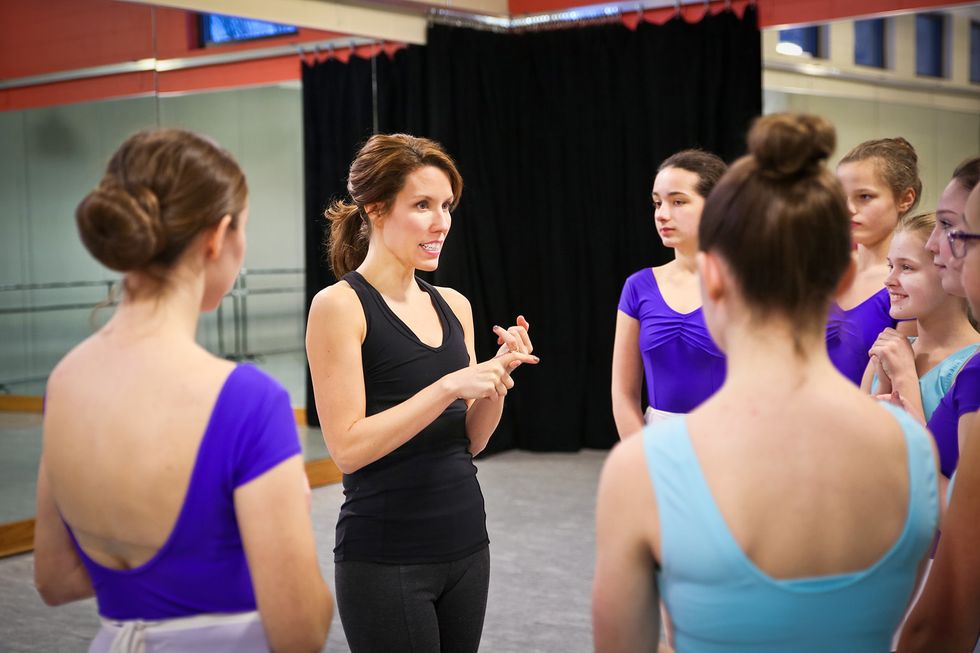
Lown (in black) heads a curriculum-licensing program called More Than Just Great Dancing, with 208 affiliated schools. Photo by Megan McCluskey, courtesy of MTJGD.
A focus on being better, not best
A positive mission statement or mantra can help shape the culture of a studio. Lown’s is “progress over perfection.” She frequently shares a quote, widely attributed to Baryshnikov: “I do not try to dance better than anyone else. I only try to dance better than myself.” That’s the example she asks dancers to follow to shape their expectations for themselves. Dancing better than you did the day before is something any dancer can strive for. For some students, this may not even mean achieving better form. “Their focus can become stronger, their attitude can become more positive, their teamwork can become more collaborative, even if their leg isn’t going higher and they’re not getting pointe shoes,” Lown says.
A plan for reporting concerns
Similar to how teachers should be on the lookout for eating disorders among students, Lown and her staff have protocols for watching for common mental health troubles, like anxiety and depression. The studio relies on guidelines published by Youth Protection Advocates in Dance, an organization that promotes healthy and safe experiences for dancers. Misty’s Dance Unlimited is certified through the YPAD training program. If a normally outgoing student becomes withdrawn, for example, or a dancer who typically looks put-together starts showing up looking unkempt, teachers report it to Lown, who will make arrangements to talk to parents. She’s careful with wording. “We always say we just want to share some observations we’re seeing in the classroom and see if you’ve seen them in other places and how we can navigate that,” she explains. Goonan agrees it’s essential to direct dancers to experts, rather than try to solve the problem yourself.
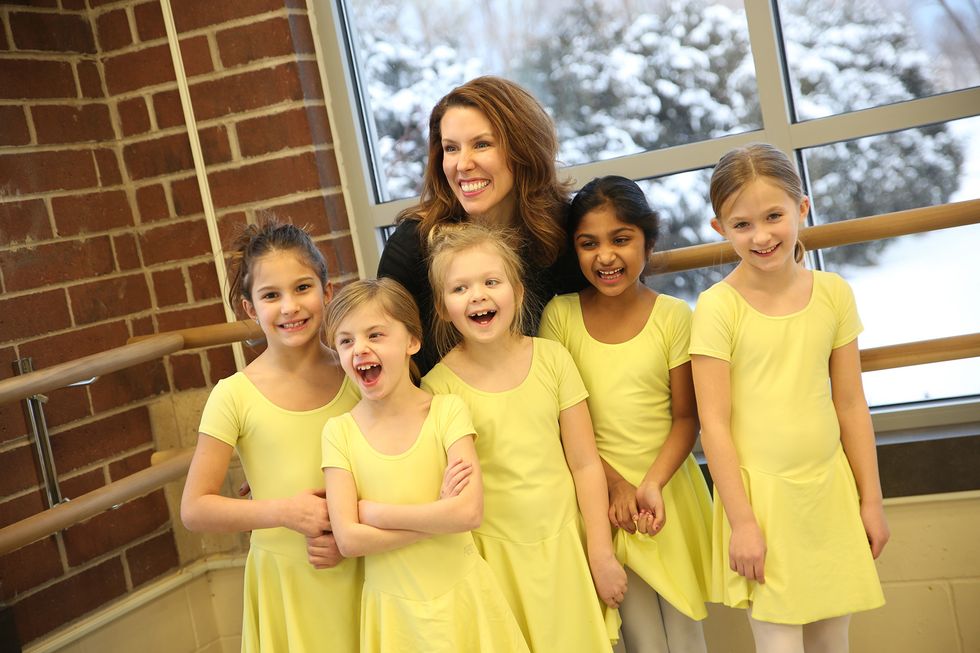
Photo by Megan McCluskey, courtesy of MTJGD
Lead by example
Lown encourages her staff to model healthy self-care and asks they take their paid-time-off days for any reason they need. “If things are hard at home, it’s hard to be an A-plus teammate at work,” she says. She also makes it a point to reach out if she senses a staffer is struggling. Sometimes just sending a text asking if they’re all right or if she can help can go a long way, she explains. “Doing something to show teachers you care sends a strong message,” she says. Lown’s focus on a healthy work-life balance has clearly rubbed off on her teachers; staff bonding outside studio walls—book and walking clubs, for example—is a faculty fixture.
As for maintaining her own mental health, Lown sticks to a regimented schedule as much as possible, waking up early and building in time for yoga twice a week. She even schedules downtime, putting her phone away from 5 to 8 on certain nights off to spend uninterrupted time with her family. “Routines and boundaries help me,” she says. “If a crisis conflicts with my routine, obviously I deal with that, but if I can keep to what I’ve established as good self-care 80 percent of the time, I know I have that margin for anything else that comes up.”




